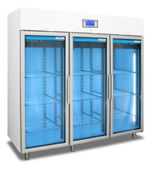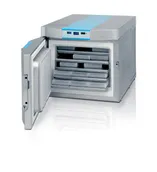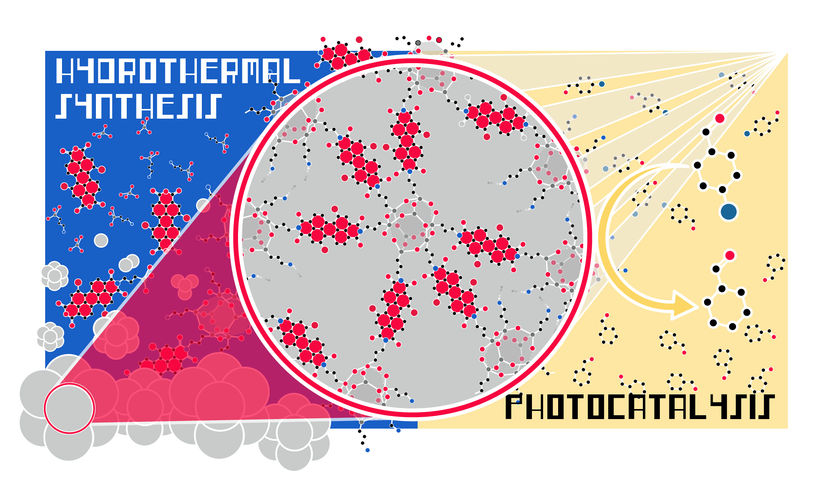BASF research boosts its innovative strength
Sales of approximately €8.5 billion in 2012 from new products
Advertisement
BASF had sales of approximately €8.5 billion in 2012 from new products that have been on the market for less than five years. “Our research Verbund has increased its innovative strength to a new level of performance in 2012,” said Dr. Andreas Kreimeyer, member of the Board of Executive Directors of BASF SE and Research Executive Director, at the Research Press Conference in Ludwigshafen. In 2012, BASF launched more than 250 new products onto the market. “If we also include new formulations and optimized products, the total actually runs to several thousand,” added Kreimeyer. In 2020, BASF aims to achieve sales of €30 billion from new products that have been on the market for less than ten years.
To continue being successful with innovations, in 2012 BASF increased its research and development expenditures to €1.7 billion (2011: €1.6 billion). At present around 10,500 employees are working in international and interdisciplinary teams on about 3,000 projects worldwide.
More innovative strength through global research
“In the future, we expect strong impulses and contributions for our innovation pipeline to come from the regions,” said Kreimeyer. In 2020, BASF plans to conduct half of its research outside Europe. “Our aim is to achieve greater access to customers, young scientists and innovation centers in the various regions.” In 2012, BASF opened seven new laboratories in Asia and the United States and expanded laboratories worldwide to achieve this goal. The proportion of research activities outside of Europe has increased from 24% in 2011 to 27% in 2012. “One of last year’s highlights was the inauguration of our Innovation Campus Asia Pacific at BASF’s new Greater China headquarters in Shanghai,” added Kreimeyer. With 450 research and development scientists, this is already BASF’s largest research site in Asia.
Global research network with more than 600 cooperations
An important part of BASF’s Know-How Verbund is a network of more than 600 interdisciplinary and international cooperations. The company works in a global network with top-ranked universities, research institutes and companies in a wide range of disciplines on numerous individual projects in order to achieve its ambitious growth targets. BASF recently inaugurated the research initiative “North American Center for Research on Advanced Materials,” launching several research projects in the material sciences field with partners in the United States.
“These joint research activities are our response to an important trend,” explained Kreimeyer. “As well as developing and producing molecules, we put together a package of chemistry combined with application know-how and services tailored to meet our customers’ requirements.”
Solutions from chemistry for energy supply
An important customer industry for BASF is the “Energy & Resources” sector. Today’s forecasts indicate that population growth and the increasing prosperity of many people will drive up the global demand for energy by more than 50% by 2050; the demand for electricity alone is likely to double.
“Chemistry as an innovation driver enables fundamental innovations for many industries which contribute greatly to improving resource efficiency and the use of renewable energy, and thus to climate protection,” emphasized Kreimeyer. Today, BASF already provides numerous products for energy supply and is researching and developing new technologies for future applications:
Wind power
The wind turbines of the future need to feature improved efficiency and greater maximum performance. An interdisciplinary BASF team of researchers, developers and market experts is working on creating materials with improved or new properties and is developing optimally matched combinations of engineering materials. These materials enable innovations in the production technology and design of rotor blades. They also help simplify manufacturing processes and promote the more efficient use of engineering materials.
Solar energy
Researchers at BASF are working on new active materials for future photovoltaic technologies based on dyes and semiconductors. Organic solar cells made from these new materials are lightweight, semitransparent and flexible. The aim is to develop organic solar cells that convert at least 15% of the incident light into electrical energy, reach a service life of well over ten years and are significantly more cost effective than silicon-based systems.
Mobile storage technologies
BASF has been researching metal organic frameworks (MOFs) for more than a decade. Aluminum MOFs can now be manufactured commercially in an eco-friendly, safe and cost-effective water-based process. The highly porous materials have an extremely large internal surface area. One gram of the powder of the substance has a surface area of more than 10,000 square meters. This property enables MOFs to store large amounts of natural gas. When the technology is used in the tanks of gas powered vehicles, more gas can be stored, thus enabling a greater driving range per tank.
Stationary storage technologies
BASF is conducting basic research on stationary storage technologies. The company aims to develop materials and the system design for operating chemical and electrochemical stationary storage units, based, for example, on cost-effective feedstocks like sodium and sulfur. In the future, stationary storage units will serve an important buffer function in balancing supply and demand for electricity from regenerative energy sources.
Electric power transmission with superconductors
Besides electric power generation and storage, the expansion and improved utilization of the electricity grid are current topics of interest. BASF is working with cooperation partners to develop new production methods for manufacturing high-temperature superconductors more efficiently and with less environmental impact. Since superconductors can carry current virtually without loss, they offer great savings potential. The German technology company Deutsche Nanoschicht GmbH has developed a process in which wires are coated by chemical solution depositions. The ceramic layers produced in this way have superconductive properties. This is especially of interest to manufacturers of generators and motors as well as for cable and utility grids for metropolitan areas. The process also enables a more efficient use of regenerative energies, especially from offshore wind farms.
Energy-efficient use of electricity
BASF is researching new solid state materials, such as magnetocaloric materials for efficient cooling. These materials heat up when exposed to a magnetic field and cool down when the magnetic field is removed. New solid state materials make refrigerators and air conditioners more energy efficient. Additionally, they are quieter and do not need gaseous refrigerants. In the future, they could be an alternative to conventional compression technology.
Organic light-emitting diodes (OLEDs) are set to exceed all existing light sources in efficiency, and in the future will convert more than 90% of the energy supplied into light. The main focus of BASF’s research in this area is the development of light-emitting dyes, the key component of OLEDs.
































































